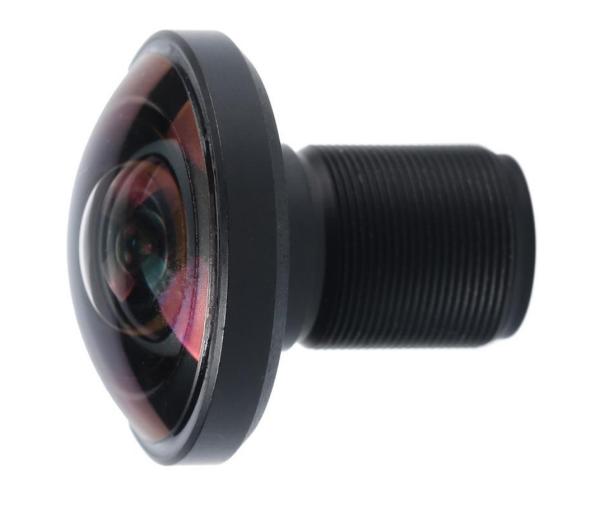A fisheye lens is an extreme wide-angle lens, also known as a panoramic lens. It is generally considered that a lens with a focal length of 16mm or a shorter focal length is a fisheye lens, but in engineering, a lens with a viewing angle range of more than 140 degrees is collectively called a fisheye lens. In practice, there are also lenses with viewing angles that exceed or even reach 270 degrees. A fisheye lens is an anti-telephoto light group with a lot of barrel distortion. The front lens of this lens is parabolically protruding to the front, and the shape is similar to the eye of a fish, hence the name “fisheye lens”, and its visual effect is similar to that of a fish observing things above the water.
The fisheye lens
The fisheye lens relies on artificially introducing a large amount of barrel distortion to obtain a large viewing angle. Therefore, except for object in the center of the image, other parts that should be straight lines have certain distortions, Which lead to many restrictions on its application. For example, in the field of security, a fisheye lens can replace multiple ordinary lenses to monitor a wide range. Since the viewing angle can reach 180º or more, there is almost no dead angle for monitoring. However, due to the distortion of the image, the object is difficult to be recognized by the human eye, which greatly reduces the monitoring ability; Another example is in the field of robotics, automated robots are required to collect image information of surrounding scenes and identify them to take corresponding actions.
If a fisheye lens is used, the collection efficiency can be increased by 2-4 times, but the aberration make software difficult to identify. So how do we recognize the image from the fisheye lens? An algorithm is provided to identify the positions of the objects in the image. But it is also difficult to realize the recognition of complex graphics due to the computational complexity of the software. Therefore, the common method now is to eliminate the distortion in the image through a series of transformations, so as to obtain a normal image and then identify it.
Fisheye pictures uncorrected and corrected
The relationship between image circle and sensor are as follows:
The relationship between image circle and sensor
Originally, fisheye lenses were only used in photography because of their special aesthetics due to the barrel distortion they create during the imaging process. In recent years, the application of fisheye lens has been commonly used in the field of wide-angle imaging, military, surveillance, panoramic simulation, spherical projection and so on. Compared with other lenses, the fisheye lens has the advantages of light weight and small size.
Post time: Jan-29-2022






